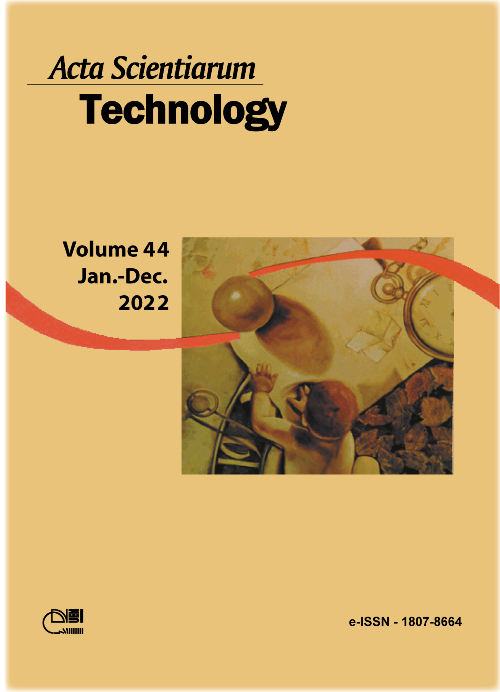Evaluation of the milk clotting potential and characterization of proteases from Aspergillus sp. and Pleurotus albidus
DOI:
https://doi.org/10.4025/actascitechnol.v44i1.57766Keywords:
Proteases; milk coagulation; cheese; P. albidus; Aspergillus sp.Abstract
The study evaluated the production of proteases in solid-state fermentation using wheat bran as a substrate. The best producing isolates were used to obtain crude extract which was evaluated for optimal pH and temperature, thermostability, effect of salts and activity against inhibitors. The studied fungi were Aspergillus sp. 125, Fusarium sp. 132, Fusarium sp. 206, Pleurotus albidus 018 and Pleurotus pulmonarius CCB20. The isolates with better results (Aspergillus sp. and P. albidus), showed protease activity with an optimum pH of 7.0, and an optimum temperature of 50ºC with good thermostability between 40 and 50ºC. As for salts, the protease activity was inhibited in the presence of ZnSO4, and the activity of the proteases from the crude Aspergillus extract, strongly inhibited by PMSF, indicating the presence of a fraction of serine protease in the extract. The extracts of the two selected isolates showed considerable inhibition by EDTA. The milk clotting activity was 240 U mL-1 for the Aspergillus extract and 153 U mL-1 for the crude P. albidus extract. Proteases are important enzymes widely used in the food industry, including cheese. The data suggest that these fungi have the potential to produce these enzymes for usage in cheese making
Downloads
Downloads
Published
How to Cite
Issue
Section
License
DECLARATION OF ORIGINALITY AND COPYRIGHTS
I Declare that current article is original and has not been submitted for publication, in part or in whole, to any other national or international journal.
The copyrights belong exclusively to the authors. Published content is licensed under Creative Commons Attribution 4.0 (CC BY 4.0) guidelines, which allows sharing (copy and distribution of the material in any medium or format) and adaptation (remix, transform, and build upon the material) for any purpose, even commercially, under the terms of attribution.
Read this link for further information on how to use CC BY 4.0 properly.











8.png)




